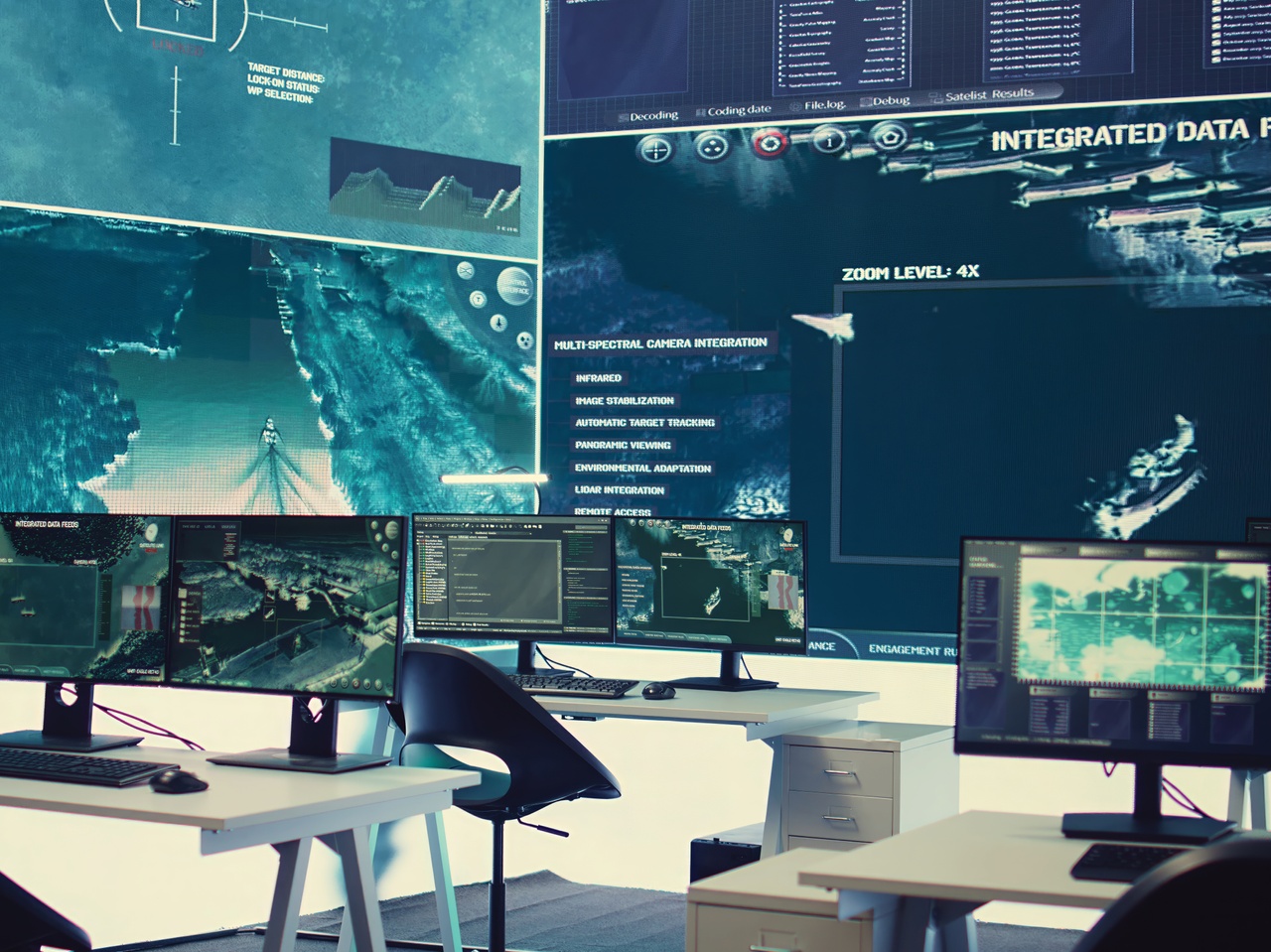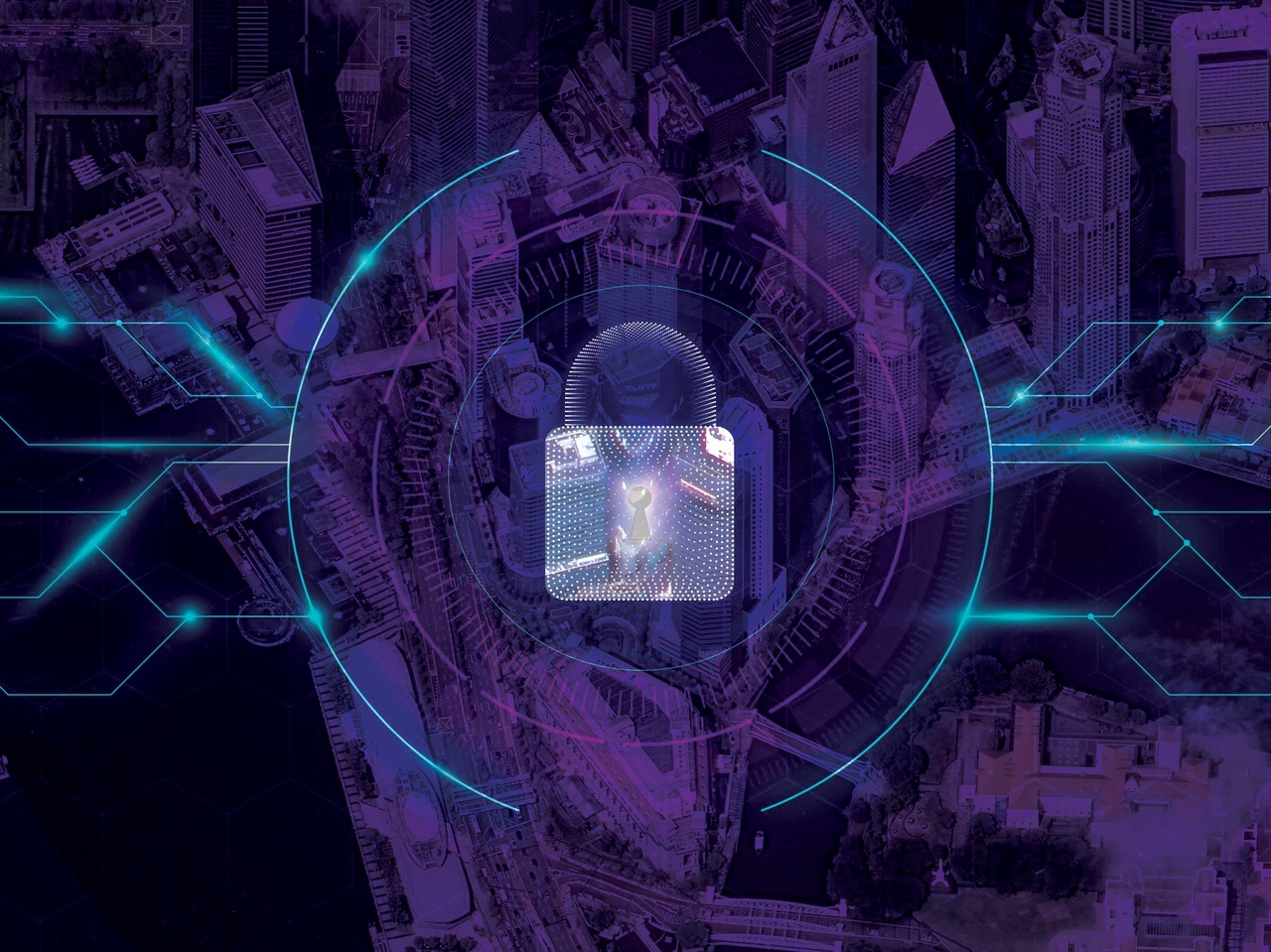
Satellite's AI Future: The Big Debate
Experts from Eutelsat, Space42, Sky Perfect JSAT, and Spire Global weigh in on how AI will impact satellite operations and services.October 7th, 2025One of the big topics at any space conference nowadays is what impact Artificial Intelligence (AI) can have on space companies in terms of improving efficiencies and bringing new technologies to market. It is a fascinating question.
In this Via Satellite roundtable, we speak to: Mariam Kaynia, chief data and information officer of Eutelsat; Prashanth Marpu, CTO of Smart Solutions for Space42; Hiroaki Nagai, executive officer group president of the Space Engineering Group, Space Business Unit, SKY Perfect JSAT and Gabriel Oehme, CTO of Spire Global, about satellite’s AI future.
VIA SATELLITE: We are seeing AI become part of the mainstream. In terms of operating your fleet, and working with customers, how is AI already making a difference?
Kaynia: Eutelsat has been experimenting and productizing AI in various use cases at different stages. From engineering support for satellite and ground segment optimization to operational optimization and business plan support, AI is helping us achieve operational efficiency and improve services for our customers.
Marpu: In Earth Observation and geospatial analytics, AI sits at the center of how we create value. It aggregates large streams of data from space; analyzes it at scale; and generates interpretations tailored to real-world use cases. That intelligence then informs decision-making in disaster response, defense, security, urban planning, and sustainability. The speed and precision with which AI fuses and interprets these datasets could not be replicated if humans alone were doing the work. What used to take weeks or months now happens in moments. AI-enabled decision making further helps us to refine the mission planning and operations.
In satellite communications, AI is quickly reshaping how networks operate. It enhances signal processing, optimizes network management, supports predictive maintenance, and strengthens interference mitigation and security. These efficiencies redefine how space-based connectivity scales and adapts.
Nagai: Recently, advanced AI is gradually being introduced into satellite systems, expanding their capabilities in control and monitoring. AI is used not only for data analysis, but also for automating processes and increasing the overall level of autonomy of satellites, which is anticipated to enhance the effectiveness and flexibility of satellite and network operations. We believe that AI will be a necessary tool for more complex software-defined satellite operations system and Universal NTN services compliant with 3GPP standards in the near future.
Oehme: Our portfolio of AI techniques is playing an increasingly important role in how we both operate our fleet and deliver insights to customers. Because our constellation is so sophisticated, AI is central to tasks like scheduling satellites and managing uplinks and downlinks across our global ground station network allowing us to run our constellation with remarkable efficiency and also to enabling best in class rate of innovation. That’s a real competitive differentiator. Just as importantly, AI is a critical part of how we process the vast amounts of space-based data we collect, from aircraft signals to radio frequencies to weather observations, and transform it into actionable intelligence to bring the best value to our customers and improve life on Earth with data from space. In aviation, for instance, it helps blend ADS-B and weather data to improve turbulence forecasts.
VIA SATELLITE: Can you tell us about some of your early steps in using AI? Have you done anything particularly significant over the last 12 months as AI becomes more mainstream?
Kaynia: We are also exploring new use cases with AI. At the end of June, Eutelsat Group was awarded with the “Outstanding Catalyst for Tech for Good” Award for their presentation at TM Forum DTW. It showcased a working IT prototype demonstrating an AI-powered end-to-end solution across several multi-orbit constellations ideal for emergency response scenarios. This use case highlights AI-driven ordering, dynamic edge orchestration, autonomous networks, unified assurance, service level agreement (SLA)-based converged billing and usage-based partner settlement.
Marpu: Over the past 12 months, we have scaled and evolved our GIQ platform, further strengthening our geospatial intelligence services. We have expanded its reach by integrating it into Microsoft Azure, making it accessible worldwide, and by opening its marketplace so that third-party developers can monetize their own AI models. Operationally, GIQ is being developed as national geospatial data analytics platform through our partnership with the UAE Space Agency. It will play a critical role in infrastructure planning, environmental regulation, and other policy domains in the UAE.
Oehme: Over the past year we’ve made some of our biggest strides in applying AI to weather forecasting. We launched two new AI-driven models — AI-WX, which focuses on medium-range forecasts, and AI-S2S, which extends into the sub-seasonal timeframe. Together, they can provide accurate, probabilistic forecasts out to 20 days and even as far as 45 days, which is a huge leap forward compared to what’s traditionally been possible.
What makes these models unique is that they combine AI techniques with Spire’s proprietary space-based data and are built on GPU-accelerated architecture. That means they can deliver forecasts at much higher speed and resolution, and with the ensemble-based approach, customers don’t just get a single forecast but a range of 200 probabilities that help them plan for a spectrum of possible outcomes.
VIA SATELLITE: Can you give any hands-on/practical examples on where AI is making a difference in terms of either customer relationships or being more efficient in running networks?
Kaynia: One example is the churn prediction, where we take into consideration the end-to-end information spectrum available from our partner to flag potential churners and provide our commercial teams early warning to be able to address the concerns of our customers and prevent churn. Another example is through our incident agent: We provide operations support with an intelligent automation tool to automatically categorize incoming incidents and based on the relevant operational procedures, recommend a potential resolution that combines automation and AI based on single incident properties.
Marpu: AI helps us process data faster to be able to make timely decisions. This is crucial especially during disasters where timely information can save lives. At Space42, we are working towards autonomous insights generation and dissemination in minutes rather than hours.
Nagai: At present, our company does not use AI technologies for satellite communication services. In general, we see that the adoption of such technologies is progressing. In particular, AI is now being used to intelligently route signals, optimize bandwidth allocation, and minimize interference. System learning algorithms can dynamically adjust communication parameters, ensuring optimal signal strength and quality across different regions.
Oehme: A great example is in weather forecasting, where AI is transforming how we use space-based data. Spire collects atmospheric profiles through GNSS radio occultation, which provides unique insights into temperature, pressure, and humidity across the globe. By applying AI to this dataset, we’ve been able to build entirely new forecasting models. This year we launched AI-WX, which delivers forecasts out to 20 days, and AI-S2S, which extends predictability out to 45 days. What makes these models powerful is that they don’t just provide a single forecast — they generate around 200 distinct forecasts, or “ensembles.” Those ensembles give customers a range of likely outcomes, which is critical for planning in uncertain conditions. For industries like energy, agriculture, and logistics, that additional lead time and accuracy translate into better resilience against extreme weather and more efficient planning.
VIA SATELLITE: Operating space networks, given there are assets on the ground and space, is a complex affair. Do you think AI has the potential to be a game-changer when it comes to managing these networks going forward?
Kaynia: AI could be a game-changer in the long term, especially considering the possible introduction of agentic AI whereby technology can make autonomous decisions and actions. However, advances will consistently require a thoughtful and careful approach, with incremental adoptions and changes to be made.
Marpu: AI will play a crucial role in network management especially with upcoming constellations. Operating space networks, from ground to orbit, is too complex for humans alone to manage at scale. By embedding autonomous operational capabilities, AI can orchestrate multi-layered, multi-orbit constellations in real time. It ensures networks run more efficiently, adapt dynamically to demand, and strengthen resilience against interference and disruption.
Oehme: There is real potential for AI to be a game-changer in how space networks are managed. In general, operating space networks is incredibly complex: You’re coordinating assets in orbit, ground stations across the globe, and the flow of data between them. As AI becomes more engrained in space operations, there’s exciting potential for how it could open up the industry to new opportunities and greater efficiencies.
VIA SATELLITE: Given the proliferation of Low-Earth Orbit (LEO) networks and the fact we are going to have tens of thousands of satellites in space, do you think the big impact of AI will be from a sustainability and traffic management perspective?
Kaynia: Yes, AI will be key for sustainability and traffic management in increasingly crowded LEO orbits. It can predict potential collisions, autonomously plan avoidance maneuvers, and optimize orbital resources like fuel and power. AI can also monitor satellite health to identify when a satellite is nearing the end of its life, allowing it to be moved safely to a disposal orbit. Overall, AI enhances safety, efficiency, and long-term sustainability in space operations.
Nagai: When it comes to sustainability of space, satellite collision avoidance is one of the major issues, and AI is expected to play a role in analysing and preventing collisions between satellites.
Oehme: The rapid growth of LEO constellations points to signs that the traditional approaches to managing space won’t be enough on their own in the long run. AI has the potential to help engineers manage this complexity more efficiently, uncover new ways to understand spacecraft behavior over time, and ensure the industry can scale responsibly.
VIA SATELLITE: In five years time, can you give us one prediction of how AI could change the space industry?
Kaynia: Considering the rapid evolution of AI, with major breakthroughs emerging almost every quarter, it is clear that the technology is steadily transforming the space industry. Advances in algorithms, processing power, and integration with satellite systems are enabling smarter, faster, and more autonomous operations. In the next five years, we anticipate a trajectory similar to what happened in the telecom sector: the emergence of autonomous constellations capable of optimizing both space and ground assets in real time based on customer demand. Routine activities such as station-keeping, collision avoidance, and resource allocation could move towards “zero-touch” operations, where AI manages them automatically. This shift would enhance efficiency, reduce operational costs, and improve service responsiveness.
Marpu: In five years, AI will be a universal utility across industries and geospatial data from space will be democratized. Today, extracting insights from satellite imagery requires advanced tools and technical expertise. By 2030, those tools will evolve to become far more user-friendly, allowing city planners, disaster-response teams, and others to interact with space data in plain language and receive precise, real-time answers.
Already, AI is powering predictive modelling at scale, equipping societies to anticipate climate risks, resource shortages, and infrastructure stress before they materialize. The technology will just become increasingly accessible, enabling governments to simulate policy impacts before acting, or businesses to integrate live Earth data into daily operations.
Nagai: Advanced AI provides new opportunities for the growth of the satellite industry. SKY Perfect JSAT aims to advance imagery analysis technologies using AI and integrate multimodal data such as optical, synthetic aperture radar (SAR) and LiDAR. This enables us to extract more precise and reliable insights. Through these initiatives, we will be able to deliver real-time space intelligence across various industries.
Oehme: AI has already transformed how we use space-based data in just the past year, so it’s exciting to think about what the next five years could bring. One area we’re already seeing major impact is in weather forecasting, where AI is making predictions more accurate, localized, and actionable. That kind of foresight translates into real economic value, whether it’s energy providers balancing grids ahead of extreme weather or supply chains planning around climate-driven disruptions. As the technology continues to evolve, the potential for AI to unlock new efficiencies and reduce costs across industries is only going to accelerate.
VIA SATELLITE: Finally, what trends do you see emerging in terms of space and AI?
Kaynia: On-board AI and edge computing, including in-orbit neural networks for real-time modeling as well as fault detection and recovery, are transforming the way satellites operate. By processing data directly in space, these capabilities reduce latency, enable faster decision-making, and improve resilience. AI is also accelerating value-added services across multiple domains, from remote sensing and predictive maintenance to real-time Earth observation, providing more timely and actionable insights. In parallel, autonomous operations and intelligent fleet management systems are enabling satellites to independently perform critical functions such as station-keeping, collision avoidance, and power or thermal regulation. This shift toward autonomy reduces the need for constant ground intervention, increases operational efficiency, and allows satellite constellations to adapt dynamically to changing conditions in orbit.
Marpu: Three trends stand out. First is the fusion of multi-source data. Satellites are only one part of the puzzle. AI now makes it possible to combine orbital imagery with aerial platforms and ground-based sensors to create a live, dynamic picture of our planet. Second is the rise of explainable AI. As algorithms shape decisions in defense, disaster response, and urban resilience, trust becomes paramount. Models that can justify why they reach a certain conclusion will be preferred for their reasoning capability. Third is the shift from analysis to simulation. AI enables “digital twins” of the Earth that can predict events, be that flooding, food insecurity, or infrastructure stress, helping decision-makers prepare with confidence.
Nagai: We believe one of the major advantages of AI is its overwhelming ability to improve information processing. The management of space assets by human resources is approaching its limits, which is becoming an emerging issue for space companies. Once AI applications address these challenges, satellite operations are expected to become more efficient and widely accessible, leading to further lowering the barrier to entry in the space business.
Oehme: As spacecraft become more powerful, the technology stack for space-based systems will continue to converge with that used for ground based-based systems. Just like a Tesla can be seen as a computer on wheels, a spacecraft can be seen as a server rack in space. This is very exciting and allows us to leverage great work done in adjacent industries while making sure we remain cognizant of our low tolerance for failures. VS
Lead photo, from left: Mariam Kaynia, Prashanth Marpu, Hiroaki Nagai, and Gabriel Oehme






